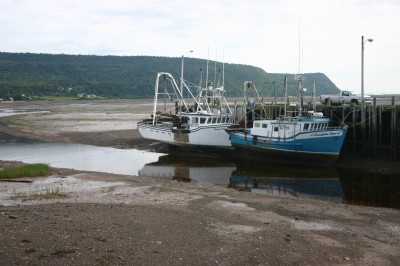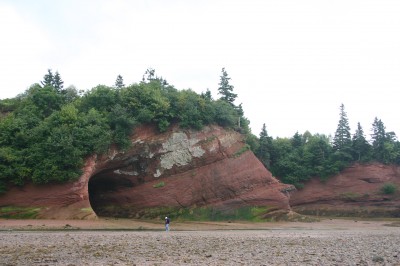As I drive along the Bay of Fundy coast in New Brunswick and Nova Scotia I see quaint wooden covered bridges and fishing villages. I pass by lakes, forests and marshes and enjoy the unspoiled nature. However, my main goal with this trip along the Bay of Fundy coast is to get a feeling for the impressive tides.
The Bay of Fundy has the highest tides in the world. It is like a big bathtub in which water periodically sloshes in after which someone pulls the plug, leaving boats, boulders and beaches high and dry. This takes place every 12.5 hours and is controlled by the gravitational force of the moon.
In some places the tide changes are horizontal, so that the edge of the water goes further and further out – in some places as much as five kilometres! In other cases the tides are experienced vertically meaning that the water level is high then low with the changing cycles. The highest recorded difference was 16 metres.
A third variant is the tidal bore. This occurs when a river flows out into the bay while the tide in the bay flows inwards at the same time. The wave created on the front edge of the incoming tide is called a tidal bore. The incoming water moves with up to 15 km per hour. Things have to move fast because 100 billion tonnes of water rush into the bay every day. It would take one year, eight months and four days for that amount of water to flow over the Niagara Falls while in the Bay of Fundy it takes only a few hours.
The ups and downs and backs and forths of the water wash and tumble the sand, pebbles, rocks and seaweed and lay the bottom of the ocean bare every day. Rocks are eroded into nifty shapes, such as the flowerpot-shaped Hopewell Rocks.









